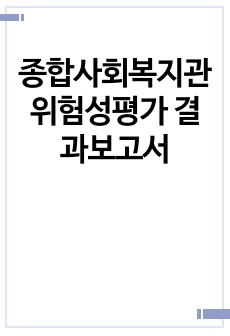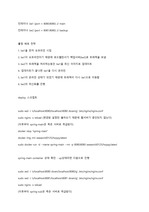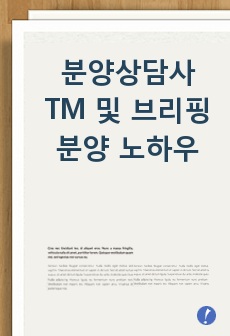[장애인]청각장애인의 사회통합을 위한 수화통역의 실태와 개선방안
*구광역시장애인재활협*
다운로드
장바구니
소개글
본 연구에서는 청각장애인들의 완전하고 평등한 사회참여 촉진 및 정보 접근권 보장을 위해 전문서비스로 제공되고 있는 수화통역의 문제점을 양성목적 및 양성과정, 수화통역 실제로 나누어 살펴보았으며, 다양화되고 전문되고 있는 다양한 수화통역 장면에서의 효과적인 수화통역과 수화통역 소비자인 농인들이 요구하는 통역사 양성에 필요한 개선방안을 제시하였다.목차
서론I. 수화통역의 실태 및 문제점
1. 양성 목적 및 양성과정
1) ‘농인의 언어’를 배우고 있다는 인식의 부족
2) 수화의 수(手)
3) ‘하는 수화 중심’에서 보는 수화 중심으로의 전환
4) 고급반의 명칭 변경 및 기초반의 고급반화
5) 수화 교육 대상자
6) 수화교육과 수화통역교육의 분리
7) 수화통역사 양성과정의 전문성 및 자신감 확보
2. 수화통역 실제
1) 의사소통 단절
2) 직무 스트레스 및 소진
III. 결론 및 제언
참 고 문 헌
<Abstract>
본문내용
수화통역은 일견 간단해 보인다. 초보자나 문외한들은 청인이 말한 것을 수화로 바꾸고, 농인이 수화한 것을 말로 바꾸면 되는 간단한 일이 수화통역이라고 보는 경우가 많다. 더욱이 통역을 잘 하기 위해서는 자신이 아는 한국어 단어를 수화로 어떻게 하는가를 배우기만 하면, 무언가를 수화로 표현하는 것과 수화를 보고 이해하는 것은 아주 쉬운 일이라는 생각이 수화통역이 이루지고 있는 대부분의 장면에서 팽배한 것이 지금의 현실이다.수화통역은 한국어 단어를 수화 단어로 바꾸는 과정이라고 보는, 이러한 수화통역모델을 Stewart와 Schein, Cartwright(1998)는 송수신모델로서 분류하고, 이 모델의 특징에 대해 다음과 같이 설명하였다.
송수신모델에서는 수화통역사는 의사소통 참여자들의 감정상태에 영향을 받지 않으면서, 무심하게 앞마당을 스쳐지나가는 나무의 그림자처럼 기계적으로 메시지를 수신하여 송신하는 역할을 하며, 마치 의사소통 흐름에 있어서 상수도관과 같은 파이프나 전화선, 보청기와 같은 존재이며, 수화통역 과정에 과거 경험이나 생각, 느낌이 개입하는 것은 의사소통 잡음변인에 해당된다고 본다. 이 모델은 미국의 경우 1970년대 풍미했던 모델이긴 하지만, 한국의 경우 현재 맹위를 떨치고 있는 모델이어서 미국에서뿐만 아니라 우리나라에서도 수화통역이 무엇인가에 대한 생각에 가장 큰 영향을 미치고 있는 모델이다. 이 모델 하에서 교육을 받은 수화통역사들은, 자신이 들은 말의 의미를 이해할 필요도 없고, 이해하려고 노력할 필요도 없다고 교육받아 왔다. 수화통역사가 할 일은 단지 손을 움직이는 것, 즉 그것을 수화로 표현하면 그만인 것이다. 수화통역사에게 있어 가장 어리석은 선택은 주제넘게 자신의 역할 외의 일을 하려고 하는 것이며, 마치 거기 없는 것처럼, 해당 의사소통 상황에 절대로 영향을 미쳐서는 안된다고 강조한다.
참고 자료
Bahan, B.(1989). Seeing person, In Sherman Wilcon(Ed.), American deaf culture: An anthology, Burtonsville, maryland: Linstok Press.Christie, K., Wilkins, D. M., McDonald, B. H., & Neuroth-Gimbrone, C. (1999). GET-TO-POINT:Academic bilingualism and discourse in American sign language and written English, In Elizabeth Winston(Ed.), Storytelling & conversation: Discourse in Deaf communities, Washington, D.C.:Gallaudet University Press.
Cokely, Dennis(1992). Interpretation:A sociolinguistic model, Burtonsville, Maryland:Linstok.
Dahl, C., & Wilcox, S.(1990). Preparing the educational interpreter:A survey of sign language interpreter training programs, American Annals of the Deaf, 135, 275-279.
Davis, J.(1989). Distinguishing language contact phenomena in ASL, In C. Lucas(Ed.), The sociolinguistics of the Deaf community(pp.85-102), San Diego, CA: Academicn Press.
Davis, J.(1990). Linguistic transference and interference: Interpreting between English and ASL, In C. Lucas(Ed.), Sign Language research:Theoretical issues(pp.308-321), Washington, DC:Gallaudet University Press.
Dean, R. K., & Pollard, Jr. R. Q.(2001). Application of demand-control theory to sign language interpreting:Implication for stress and interpreter training. Journal of Deaf Studies and Deaf Education, 6(1), 1-14.
DeCaro, J., Feurerstein, M., & Hurwitz, T. A. (1992). Cumulative trauma disorders among educational interpreters: Contributing factors and intervention, American Annals of the Deaf, 137(3), 288-292.
Fontana, S. (1999). Italian sign language and spoken Italian in contact: An analysis of interactions between Deaf parents and hearing children. In E. Winston(Ed.), Storytelling and conversation:Discourse in Deaf communities(pp.149-161), Washington, DC: Gallaudet University Press.
Frishberg, N.(1990). Interpreting:An introduction(revised ed.), Silver Spring, MD: Registry of Interpreters for the Deaf.
Greeno, J. G.(1993). From research to reform education and cognitive science, In L. A. Penner, G. M. Batsche, H. M. Knoff, & D. L. Stone(Eds.), The challenges in mathematics and science education: Psychology`s response(pp.153-192), NY:Oxford University Press.
Kelly, J. E.(2001). Transliterating:Show me the English, Alexandria, VA: RID Press.
Lucas, C., & Valli, C.(1989). Language contact in the American Deaf community, In C. Lucas(Ed.), The sociolinguistics of the Deaf community(pp.11-40), Washington, DC: Gallaudet University Press.
Lucas, C., & Valli, C.(1990). ASL, English, and Contact signing, In C. Lucas(Ed.), Sign language research: Theoretical issues(pp.288-307), Washington, DC: Gallaudet University Press.
Metzger, M.(1999). Footing shifts in an interpreted mock interveiw, In Elizabeth Winston(Ed.), Storytelling & conversation: Discourse in Deaf communities, Washington, D.C.: Gallaudet University Press.
Napier, J.(2002). University interpreting:Linguistic issues for consideration, Journal of Deaf Studies and Deaf Education, 7(4), 281-301.
Registry of Interpreters for the Deaf(1997). Cumulative motion injury, Standard practice paper(brochure), Siver Spring, MD:Author.
Roth, F. P., & Spekman, N. J.(1984). Assessing the pragmatic abilities of children:Part 1, Organization framework and assessment parameters, Journal of Speech and Hearing Disorders, 49, 2-11.
Roy, C.(1989). A sociolinguistic analysis of the interpreter`s role in the turn exchanges of an interpreted event. Unpublished doctoral dissertation, Georgetown University, Washington, DC.
Roy, C.(1993). A sociolinguistic analysis of the interpreter`s role in simultaneous talk in interpreted interaction. Multilingua, 12(4), 341-63.
Sanderson, G.(1987). Overuse syndrome among sign language interpreters, Journal of Interpretation, 4, 73-77.
Shroyer, E. H., & Compton, M. V.(1994). Educational interpreting and teacher preparation:An interdisciplinary model, American Annals of the Deaf, 139, 472-479.
Stewart, D. A., Schein, J. D., & Cartwright, B. E.(1998). Sign language interpreting:Exploring its art and science. Needhan Heights, MA: Allyn & Bacon.
Swartz, D. B.(1999). Job satisfaction of interpreters for the deaf, Unpublished doctoral dissertation, Minneapolis, Capella University.
Theorell, T., & Karasek, R. A.(1996). Current issues relating to psychosocial job strain and cardiovascular disease research, Journal of Occupational Health Psychology, 1(1), 9-26.
Watson, J.(1987). Interpreter burnout. Journal of Interpretation, 4, 79-85.
WHO(2001). International classification of functioning, disability, and health, WHO.
Zimmer, J.(1989). ASL/English interpreting in an interactive setting, In Proceedings of the 30th annual conference of the American translators association, Medford, NJ: Learned Information.
이 자료와 함께 구매한 자료
 [수화통역] 수화통역 서비스의 활성화 방안 7페이지
[수화통역] 수화통역 서비스의 활성화 방안 7페이지 청각장애인과 일반사회의 융화를 위한 수화통역 21페이지
청각장애인과 일반사회의 융화를 위한 수화통역 21페이지 [육아정책]저출산에 문제 및 정책적 대응방안 27페이지
[육아정책]저출산에 문제 및 정책적 대응방안 27페이지 [수화] 수화 22페이지
[수화] 수화 22페이지 [복지]저출산 요인과 해결방안 5페이지
[복지]저출산 요인과 해결방안 5페이지



















![[장애인]청각장애인의 사회통합을 위한 수화통역의 실태와 개선방안](/doc/cover/4097920/%EC%9E%A5%EC%95%A0%EC%9D%B8_%EC%B2%AD%EA%B0%81%EC%9E%A5%EC%95%A0%EC%9D%B8%EC%9D%98_%EC%82%AC%ED%9A%8C%ED%86%B5%ED%95%A9%EC%9D%84_%EC%9C%84%ED%95%9C_%EC%88%98%ED%99%94%ED%86%B5%EC%97%AD%EC%9D%98_%EC%8B%A4%ED%83%9C%EC%99%80_%EA%B0%9C%EC%84%A0%EB%B0%A9%EC%95%88.jpg)






